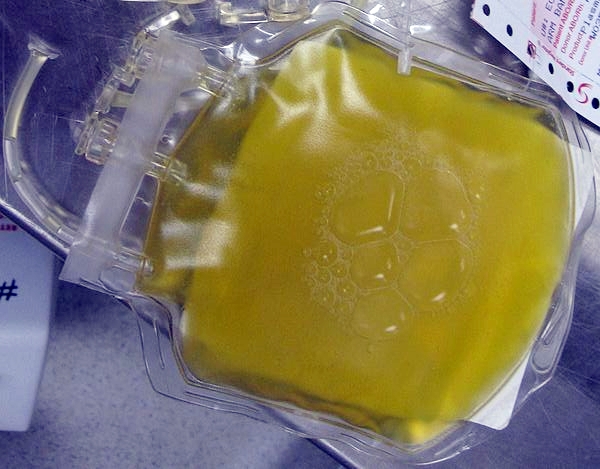12 July 2023. A clinical trial is recruiting participants to assess the safety and feasibility of a system for spray drying and re-constituting a person’s blood plasma. The trial is sponsored by Velico Medical Inc. in Beverly, Massachusetts, developer of the FrontlineODP system being tested, for use in emergency medicine and remote locations or circumstances where conventional blood transfusions are not practical.
Velico Medical seeks to provide a better means for making blood plasma available for transfusions, particularly in cases of trauma where large quantities may be needed. Plasma is the liquid component of blood with a dull yellow color, making up more than half of its volume. Red, white, and platelet blood cells float in plasma that also carries nutrients through the blood stream, removes waste, prevents infections, and helps keep the body functioning. Where large amounts of blood are lost due to trauma, surgery, or clotting disorders, plasma transfusions can help replenish the needed supply.
Liquid plasma outside the body, such as in donations, has a shelf life of about a day. Storing donated plasma today for up to a year requires freezing while it’s stored or transported. Velico Medical says its FrontlineODP system — ODP stands for on-demand plasma — is based in part on technology developed under contract to the Biomedical Advanced Research and Development Authority or BARDA, a unit of the U.S. Department of Health and Human Services. The company also acquired through licensing in July 2022 a spray-drying technique that extends the shelf life of plasma to two years.
Designed for use at the point of care
In the FrontlineODP process, donated liquid plasma is pre-treated, and sprayed through hot air to dry the plasma, where it’s filtered and captured in the drying chamber. The dried plasma then is collected and sealed in plastic pouches to keep out moisture. Velico Medical says a unit of dried plasma can be reconstituted with 200 to 250 milliliters of sterile water, and is usable for transfusions in minutes. The company says FrontlineODP dried plasma is designed for use at the point of care, including by first responders and military medical teams.
The early-stage clinical trial is enrolling 24 healthy individuals at three sites in Ohio and Wisconsin. All participants are asked to give one or more blood donations, where plasma is removed through plasmapheresis, a process that separates plasma in a centrifuge and remaining blood components are returned to participants. Half of participants are randomly assigned to receive a single re-infusion of their own reconstituted dry plasma of 200 or 400 milliliters. The other half of the sample will receive two infusions of their own reconstituted dry plasma followed by conventional frozen plasma, or in reverse order: first frozen plasma, then reconstituted dry plasma.
The study team is looking mainly for any adverse effects from the dried plasma after four and six weeks, but also indicators of blood quality, including clotting factors and other key proteins need by transfusion recipients. “Clinicians who treat life-threatening hemorrhage,” says Velico’s chief medical officer and clinical-trial team leader Mark Popovsky in a company statement released through Cision, “are seeking a plasma product that can be administered prior to the patient arriving at a trauma center. Spray-dried plasma provides the biologic potency of frozen plasma with logistical convenience in situations where minutes can mean the difference between life and death.”
More from Science & Enterprise:
- Biochip Device Tests Malaria Drug Efficacy, Safety
- Device Company, Medical Center Partner on Blood Infections Trial
- Biotech Gains $53.7M Infectious Disease Test Award
- Screening Device Company Kicks-Off Type 1 Diabetes Network
- Trial Shows Electronic Dressing Stops Biofilm Infections in Burns
We designed Science & Enterprise for busy readers including investors, researchers, entrepreneurs, and students. Except for a narrow cookies and privacy strip for first-time visitors, we have no pop-ups blocking the entire page, nor distracting animated GIF graphics. If you want to subscribe for daily email alerts, you can do that here, or find the link in the upper left-hand corner of the desktop page. The site is free, with no paywall. But, of course, donations are gratefully accepted.
* * *


 RSS - Posts
RSS - Posts
You must be logged in to post a comment.